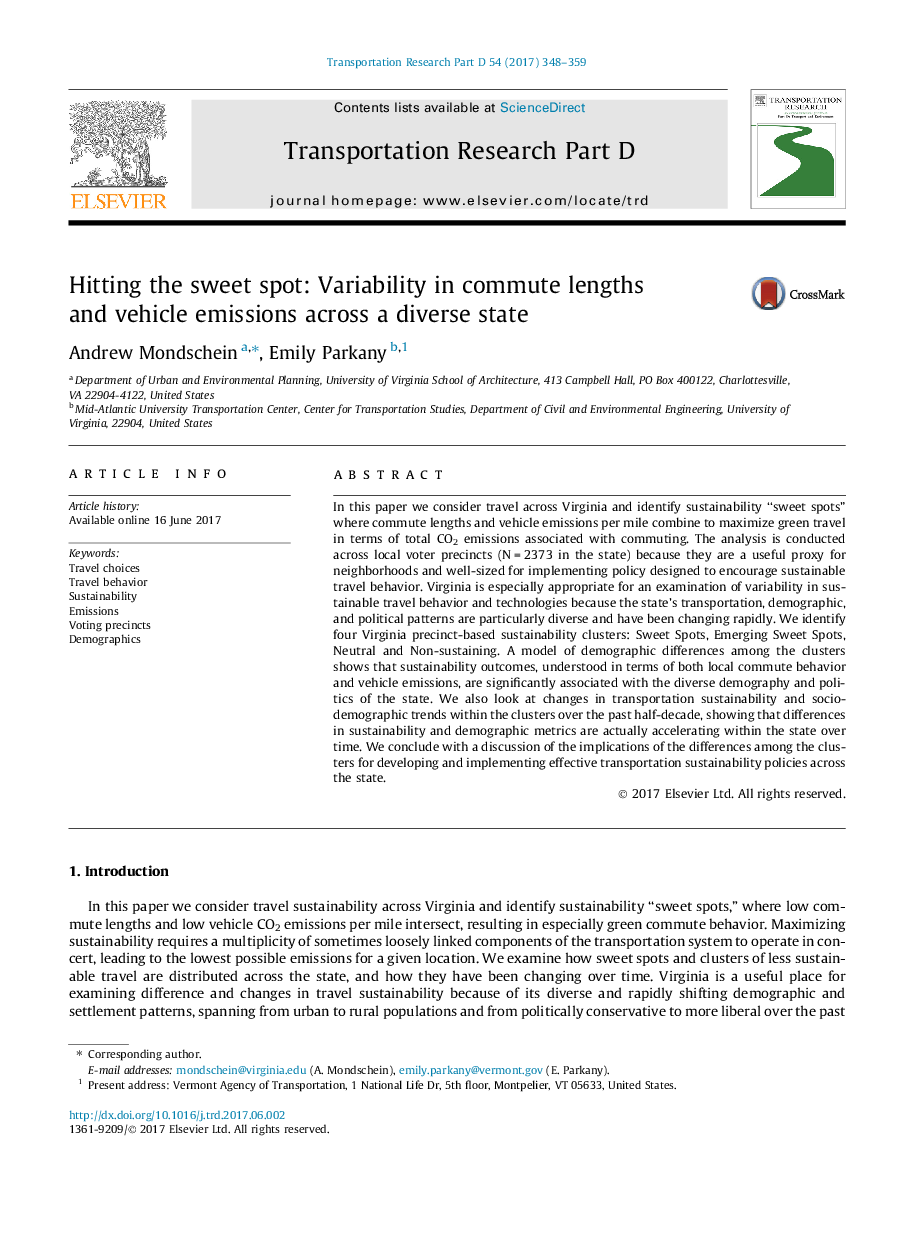| کد مقاله | کد نشریه | سال انتشار | مقاله انگلیسی | نسخه تمام متن |
|---|---|---|---|---|
| 5119239 | 1485870 | 2017 | 12 صفحه PDF | دانلود رایگان |
- Research examines interactions between vehicle emissions and jobs-housing balance.
- Considers both vehicle technologies/emissions and commute behavior.
- Voting precincts are used for geographical analysis.
- Sustainable cluster areas with low emissions and shorter commutes can be identified.
- Sustainable cluster precincts show socio-economic differences from other precincts.
In this paper we consider travel across Virginia and identify sustainability “sweet spots” where commute lengths and vehicle emissions per mile combine to maximize green travel in terms of total CO2 emissions associated with commuting. The analysis is conducted across local voter precincts (NÂ =Â 2373 in the state) because they are a useful proxy for neighborhoods and well-sized for implementing policy designed to encourage sustainable travel behavior. Virginia is especially appropriate for an examination of variability in sustainable travel behavior and technologies because the state's transportation, demographic, and political patterns are particularly diverse and have been changing rapidly. We identify four Virginia precinct-based sustainability clusters: Sweet Spots, Emerging Sweet Spots, Neutral and Non-sustaining. A model of demographic differences among the clusters shows that sustainability outcomes, understood in terms of both local commute behavior and vehicle emissions, are significantly associated with the diverse demography and politics of the state. We also look at changes in transportation sustainability and socio-demographic trends within the clusters over the past half-decade, showing that differences in sustainability and demographic metrics are actually accelerating within the state over time. We conclude with a discussion of the implications of the differences among the clusters for developing and implementing effective transportation sustainability policies across the state.
Journal: Transportation Research Part D: Transport and Environment - Volume 54, July 2017, Pages 348-359
